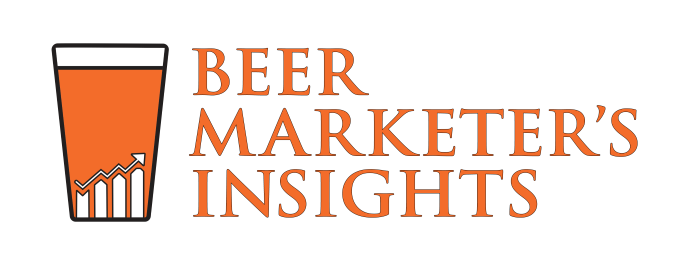Beer Marketer's Insights
Big Tax Hike in Puerto Rico
Soft Sales in Supers Too
Total beer biz down 1.4% in supers for 4 weeks thru May 18 and flat for 12 weeks, according to AC Nielsen numbers reported by J.P. Morgan’s John Faucher yesterday. AB off 0.4% for 4 weeks but gained share in supers. Miller down 4%, Coors down 3% for 4 weeks, each down about 2% for 12 weeks. But pricing mostly holding in supers: avg prices paid for AB and Miller brands up 2.5-2.6% for 12 weeks as both benefit from high-priced malternative intros and price hikes, while Coors avg prices up 0.8% for 4 weeks and 1.1% for 12 weeks “largely due to negative mix effects from Killian’s and Zima,” wrote John.
At long last, here is biggest global beer deal yet: SABMiller plc. And make no mistake, SABMiller plans more deals to come. PM and SAB struck deal to combine #4 worldwide brewer SAB and #7 brewer Miller and create a new #2 brewer. Deal expected to close in Jul. SAB ceo Graham Mackay said deal “represents a new chapter in our development…positioning us to be a major participant in the ongoing consolidation of the global brewing industry.”
SABMiller sold 102 mil bbls in yr thru Mar 31, 2002 (including licensed volume), about 5 mil bbls behind AB. Combo had pro-forma revs of $9.3 bil and EBITDA of $1.5 bil. But both Miller and SAB earnings declined in latest year. PM will keep 36% stake in combined co (stock worth $3.6 bil), have 3 seats on board (out of 13) and voting rights just under 25%. PM said deal will be neutral to its earnings for next 2 yrs, but it will have 1-time gain in 3d qtr of a mere $3 bil pre-tax, $2 bil after-tax. Because of way transaction structured, PM minimizes taxes and SAB minimizes cash outlay. SAB sez it expects deal to add to earnings in yr 1 and bring cost savings of $50 mil per yr starting in yr 3. Miller prexy John Bowlin stays on “responsible for SABMiller’s business in the US and Central America.” PM agreed not to sell any shares for 3 yrs and not to buy any more for at least 2.5 yrs, “subject to certain exceptions.”
In conference call this morning, PM ceo Louis Camilleri emphasized that PM has “flexibility” to either buy more of SABMiller and “form a 3d leg” (to go with tobacco and food) if it likes where SABMiller headed in global beer game, or reduce its stake. SAB chairman Graham Mackay said talks with PM about future “had nothing to do with withdrawal [of stake], but much more with keeping their position and supporting it, in fact even improving it in the longer term.” Deal “gives us scale and the benefits of a hard currency, a large profit pool in which we will now operate without having to pay a high price for it” added Graham. Lots more details in Beer Marketer’s INSIGHTS.
Neither Miller nor Coors headed into peak-selling season with much momentum. Following an ok Apr, Miller sales-to-retailers down 7-8% for 4 weeks thru May 25, with Gen Draft down double-digits in period. Miller reportedly 700,000 bbls or so below budget so far this yr. Coors also sluggish at best. Sales-to-retailers up less than 1% YTD thru mid-May, down a smidgen for 4 weeks. So it's missin' targets too. Coors actually up solidly in some areas, but hurt badly in southern Calif and northern Tex. Coors southwest FBA down 8% or so for 4 weeks thru late May, 4% for 13 weeks as Coors Light down just slightly there, but other brands way off.
How To Hi- End
NBWA Gettin’ the Good News Out
Went on PR offensive in NYC this week with press conference highlighting benefits of moderate drinking and how to pair beer with food. While wine and spirits assns have run similar programs in past, big brewers have so-far shied away from health issue, presumably because of liability concerns. But NBWA brought in respected Harvard alcohol/health researcher Eric Rimm and MD Dr Norman Kaplan from Tex to outline how moderate drinking linked to lower risk for heart disease, stroke, heart failure, diabetes, dementia and other health problems. About 2 dozen reporters attended, including folks from Wall St Jnl, medical news website, food mags, etc. Details in June Alcohol Issues INSIGHTS.
FTC to CSPI: Case "Closed"
Discounting Picks Up Some
Hi-Spend for Hi-End
That's Consolidation!
In aftermath of Diageo/Seagram deal, expect the 4 big wine & spirits distribs in Illinois will be pared back to 2, according to vet alc bev atty Mort Siegel at NCSLA meeting. Said too that 6 "national wholesaler" organizations control close to 50% of spirits biz. In "some instances, some wholesaler organizations control as much as 25-28% of a single supplier?s business."


